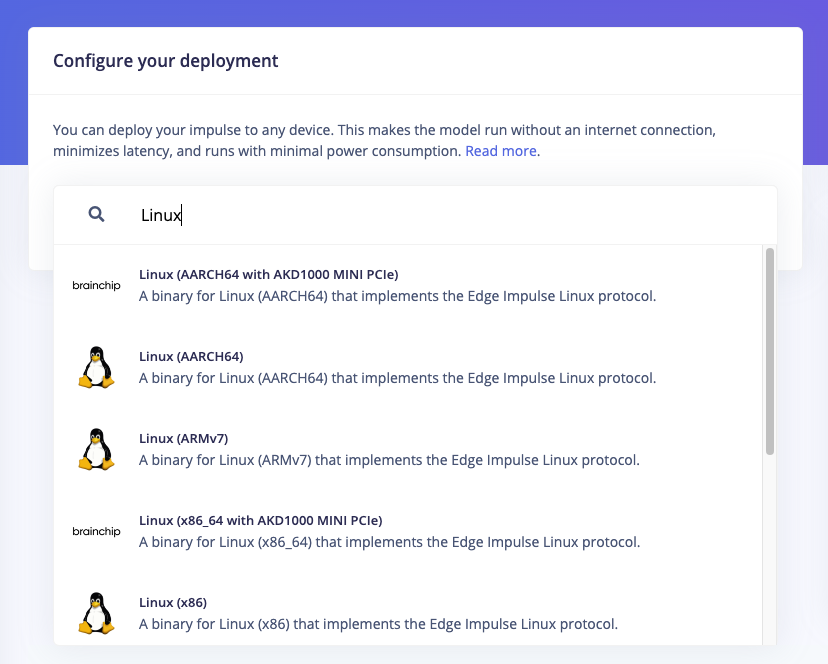Installation guide
- Generic Linux/macOS
- Raspberry Pi
- Jetson Nano
- Windows Subsystem for Linux (WSL)
- Install a recent version of Python 3 (>=3.7).
- Install the SDK
- Clone this repository to get the examples:
- (Optional) If you want to use the camera or microphone examples, install the dependencies:
Classifying data
This SDK provides a simple interface to run Edge Impulse machine learning models on Linux machines using Python. To classify data (whether this is from the camera, the microphone, or a custom sensor) you’ll need a model file. This model file contains all signal processing code, classical ML algorithms and neural networks - and typically contains hardware optimizations to run as fast as possible. To grab a model file:- From the Edge Impulse Linux CLI
- From Edge Impulse Studio
- Train your model in Edge Impulse.
- Install the Edge Impulse for Linux CLI.
-
Download the model file via:
This downloads the file into
modelfile.eim. (Want to switch projects? Add--clean)
- Audio - grabs data from the microphone and classifies it in realtime.
- Camera - grabs data from a webcam and classifies it in realtime.
- Camera (full frame) - grabs data from a webcam and classifies it twice (once cut from the left, once cut from the right). This is useful if you have a wide-angle lens and don’t want to miss any events.
- Still image - classifies a still image from your hard drive.
- Video - grabs frames from a video source from your hard drive and classifies it.
- Custom data - classifies custom sensor data.
--help argument for more information.
Collecting data
Collecting data from other sensors
The Linux Python SDK includes an example for uploading raw sensor data to an Edge Impulse project via the Ingestion API using a python script here..Troubleshooting
Collecting print out from the model
To display the logging messages (ie, you may be used to in other deployments), init the runner like soModel timeouts / crashes
For some very large models you may find the default timeout value is too low. If your model is crashing or timing out, you can try increasing the timeout value when initializing theImpulseRunner:
[Errno -9986] Internal PortAudio error (macOS)
If you see this error you can re-install portaudio via:Abort trap (6) (macOS)
This error shows when you want to gain access to the camera or the microphone on macOS from a virtual shell (like the terminal in Visual Studio Code). Try to run the command from the normal Terminal.app.Exception: No data or corrupted data received
This error is due to the length of the results output. To fix this, you can overwrite this line in theclass ImpulseRunner from the runner.py.
